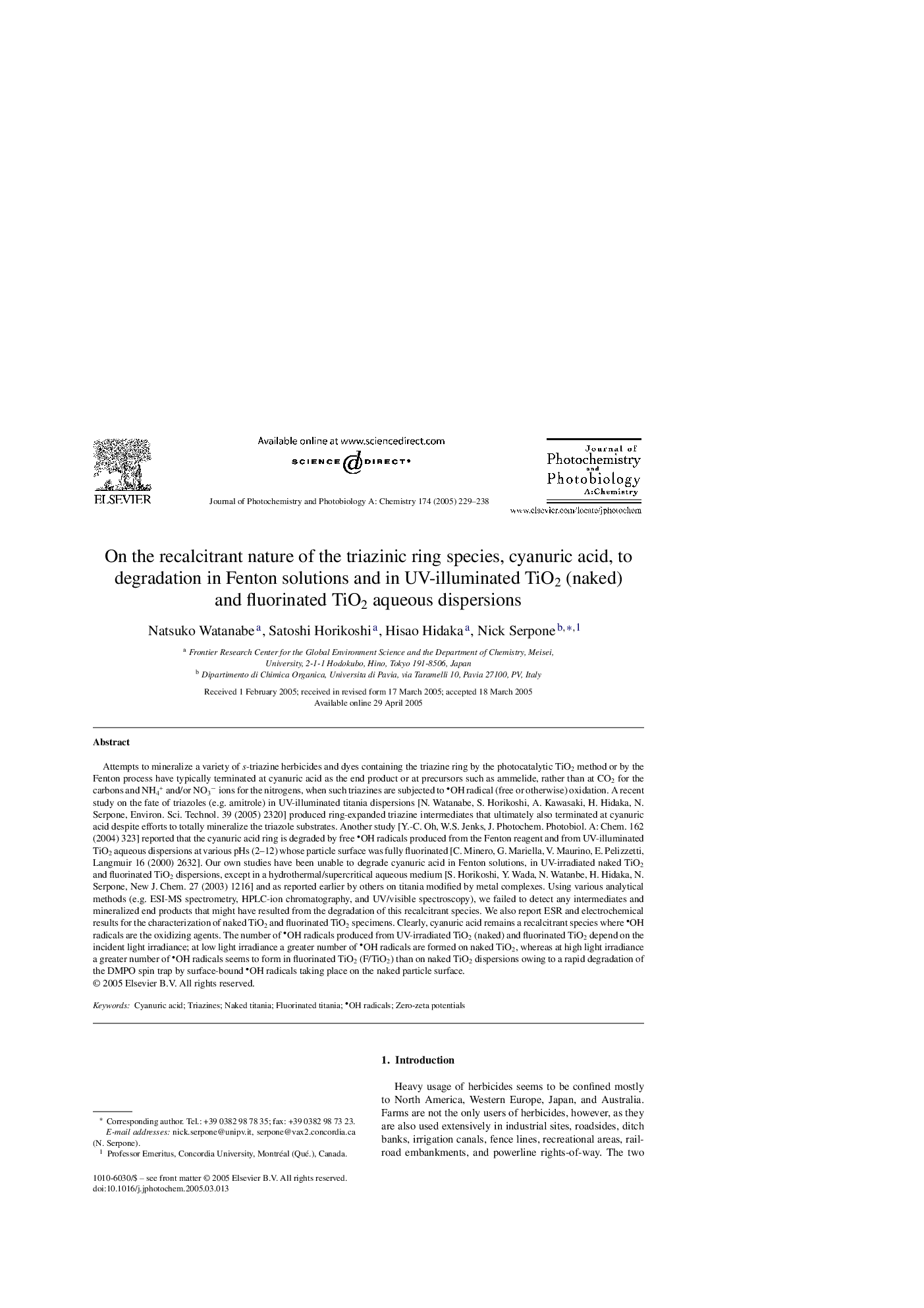| Article ID | Journal | Published Year | Pages | File Type |
|---|---|---|---|---|
| 9605505 | Journal of Photochemistry and Photobiology A: Chemistry | 2005 | 10 Pages |
Abstract
Attempts to mineralize a variety of s-triazine herbicides and dyes containing the triazine ring by the photocatalytic TiO2 method or by the Fenton process have typically terminated at cyanuric acid as the end product or at precursors such as ammelide, rather than at CO2 for the carbons and NH4+ and/or NO3â ions for the nitrogens, when such triazines are subjected to OH radical (free or otherwise) oxidation. A recent study on the fate of triazoles (e.g. amitrole) in UV-illuminated titania dispersions [N. Watanabe, S. Horikoshi, A. Kawasaki, H. Hidaka, N. Serpone, Environ. Sci. Technol. 39 (2005) 2320] produced ring-expanded triazine intermediates that ultimately also terminated at cyanuric acid despite efforts to totally mineralize the triazole substrates. Another study [Y.-C. Oh, W.S. Jenks, J. Photochem. Photobiol. A: Chem. 162 (2004) 323] reported that the cyanuric acid ring is degraded by free OH radicals produced from the Fenton reagent and from UV-illuminated TiO2 aqueous dispersions at various pHs (2-12) whose particle surface was fully fluorinated [C. Minero, G. Mariella, V. Maurino, E. Pelizzetti, Langmuir 16 (2000) 2632]. Our own studies have been unable to degrade cyanuric acid in Fenton solutions, in UV-irradiated naked TiO2 and fluorinated TiO2 dispersions, except in a hydrothermal/supercritical aqueous medium [S. Horikoshi, Y. Wada, N. Watanbe, H. Hidaka, N. Serpone, New J. Chem. 27 (2003) 1216] and as reported earlier by others on titania modified by metal complexes. Using various analytical methods (e.g. ESI-MS spectrometry, HPLC-ion chromatography, and UV/visible spectroscopy), we failed to detect any intermediates and mineralized end products that might have resulted from the degradation of this recalcitrant species. We also report ESR and electrochemical results for the characterization of naked TiO2 and fluorinated TiO2 specimens. Clearly, cyanuric acid remains a recalcitrant species where OH radicals are the oxidizing agents. The number of OH radicals produced from UV-irradiated TiO2 (naked) and fluorinated TiO2 depend on the incident light irradiance; at low light irradiance a greater number of OH radicals are formed on naked TiO2, whereas at high light irradiance a greater number of OH radicals seems to form in fluorinated TiO2 (F/TiO2) than on naked TiO2 dispersions owing to a rapid degradation of the DMPO spin trap by surface-bound OH radicals taking place on the naked particle surface.
Keywords
Related Topics
Physical Sciences and Engineering
Chemical Engineering
Bioengineering
Authors
Natsuko Watanabe, Satoshi Horikoshi, Hisao Hidaka, Nick Serpone,
